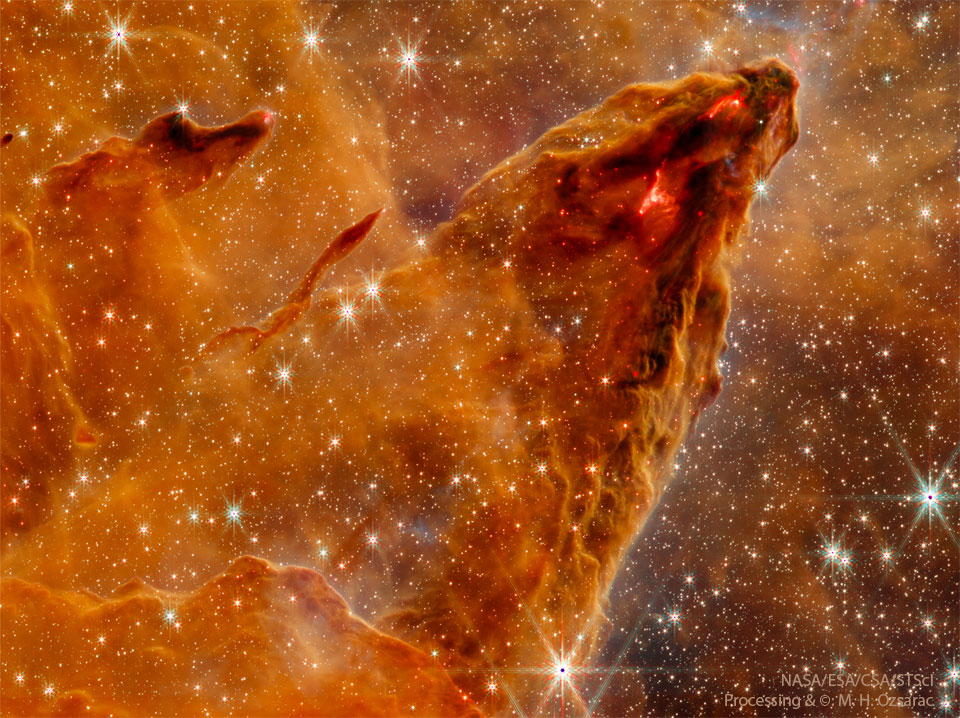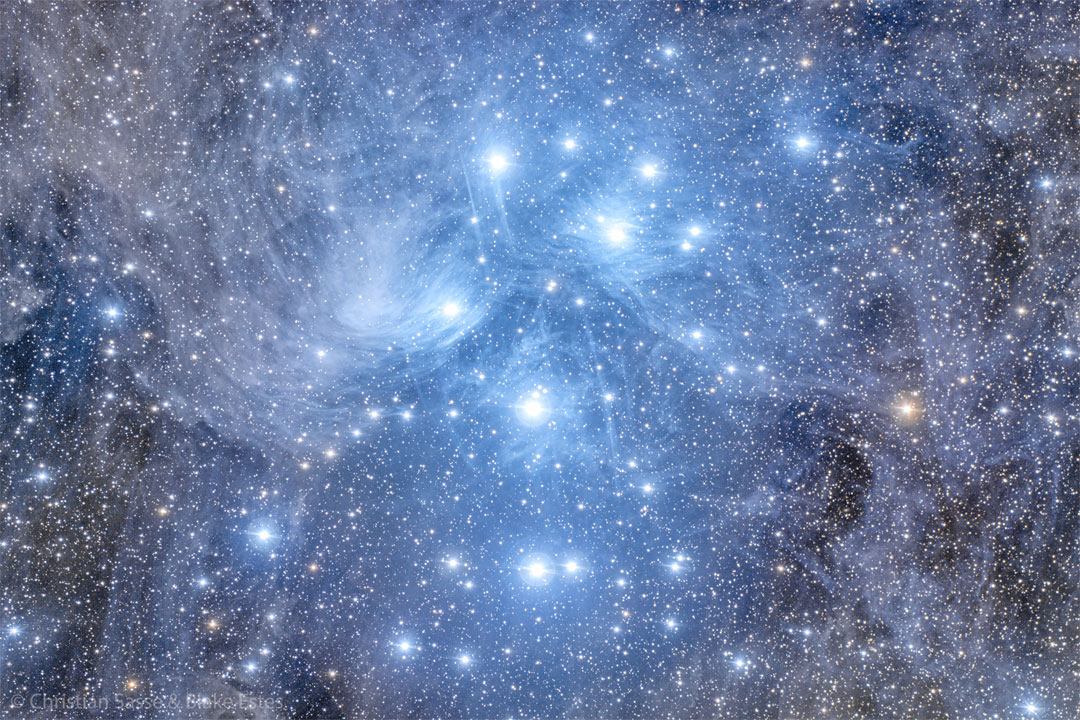Nombre total de pages vues
08/12/2022
BIOMIMETISME - Des robots spatiaux équipés de patte de gecko
ASTRONOMY - Orion and the Ocean of Storms
2022 December 8
Image Credit: NASA, Artemis 1
Explanation: A camera on board the uncrewed Orion spacecraft captured this view on December 5 as Orion approached its return powered flyby of the Moon. Below one of Orion's extended solar arrays lies dark, smooth, terrain along the western edge of the Oceanus Procellarum. Prominent on the lunar nearside Oceanus Procellarum, the Ocean of Storms, is the largest of the Moon's lava-flooded maria. The lunar terminator, shadow line between lunar night and day, runs along the left of the frame. The 41 kilometer diameter crater Marius is top center, with ray crater Kepler peeking in at the edge, just right of the solar array wing. Kepler's bright rays extend to the north and west, reaching the dark-floored Marius. Of course the Orion spacecraft is now headed toward a December 11 splashdown in planet Earth's water-flooded Pacific Ocean.
ASTRONOMIE - Mars - 08-12-2022
06/12/2022
MICROPHOTOGRAPHIE - Marek Miś - Un mélange à base d'acide citrique un peu raide
AVIATION IMAGINEE - Les femmes pilotes d'avions : impensable à l'époque
© Harry Grant Dart pour All stroy magazine
ASTRONOMIE - Occultation de Mars (8 décembre 2022)
ASTRONOMY - M16: A Star Forming Pillar from Webb
2022 December 6
Image Credit: NASA, ESA, CSA, STScI, Processing & Copyright: Mehmet Hakan Özsaraç
Explanation: What’s happening inside this interstellar mountain? Stars are forming. The mountain is actually a column of gas and dust in the picturesque Eagle Nebula (M16). A pillar like this is so low in density that you could easily fly though it -- it only appears solid because of its high dust content and great depth. The glowing areas are lit internally by newly formed stars. These areas shine in red and infrared light because blue light is scattered away by intervening interstellar dust. The featured image was captured recently in near-infrared light in unprecedented detail by the James Webb Space Telescope (JWST), launched late last year. Energetic light, abrasive winds, and final supernovas from these young stars will slowly destroy this stellar birth column over the next 100,000 years.
05/12/2022
ASTRONOMY - Pleiades: The Seven Sisters Star Cluster
2022 December 5
Image Credit & Copyright: Blake Estes (iTelescope Siding Spring Obs.) & Christian Sasse
Explanation: Have you ever seen the Pleiades star cluster? Even if you have, you probably have never seen it as large and clear as this. Perhaps the most famous star cluster on the sky, the bright stars of the Pleiades can be seen with the unaided eye even from the depths of a light-polluted city. With a long exposure from a dark location, though, the dust cloud surrounding the Pleiades star cluster becomes very evident. The featured 11-hour exposure, taken from the Siding Spring Observatory in Australia, covers a sky area several times the size of the full moon. Also known as the Seven Sisters and M45, the Pleiades lies about 400 light years away toward the constellation of the Bull (Taurus). A common legend with a modern twist is that one of the brighter stars faded since the cluster was named, leaving only six of the sister stars visible to the unaided eye. The actual number of Pleiades stars visible, however, may be more or less than seven, depending on the darkness of the surrounding sky and the clarity of the observer's eyesight.
04/12/2022
MICROPHOTOGRAPHIE - Marek Miś - L'acide malique : le plein de goût
ASTRONOMY -Video: Powers of Ten
2022 December 4
Video Credit & Copyright: Charles & Ray Eames (Eames Office)
Explanation: How different does the universe look on very small scales? On very large scales? The most famous short science film of its generation gives breathtaking comparisons. That film, Powers of Ten, originally created in the 1960s, has been officially posted to YouTube and embedded here. From a picnic blanket near Chicago out past the Virgo Cluster of Galaxies, every ten seconds the film zooms out to show a square a factor of ten times larger on each side. The 9-minute video then reverses, zooming back in a factor of ten every two seconds and ends up inside a single proton. The Powers of Ten sequence is actually based on the book Cosmic View by Kees Boeke in 1957, as is a similar but mostly animated film Cosmic Zoom that was also created in the late 1960s. The changing perspectives are so enthralling and educational that sections have been recreated using more modern computerized techniques, including the first few minutes of the movie Contact. Ray and husband Charles Eames, the film's creators, were known as quite visionary spirits and even invented their own popular chair.
SANTé/MEDECINE - Cancer Espoir : (1/3) Une nouvelle génération de thérapies
Longtemps utilisé surtout pour les vaccins, l’ARN messager pourrait entrer dans une nouvelle phase de son histoire. Des chercheurs montrent ...

-
2022 September 26 All the Water on Planet Earth Illustration Credit: Jack Cook, Adam Nieman, Woods Hole Oceanographic Institution ; Data ...
-
2025 May 11 The Surface of Venus from Venera 14 Image Credit: Soviet Planetary Exploration Program , Venera 14 ; Processing & Copyri...







